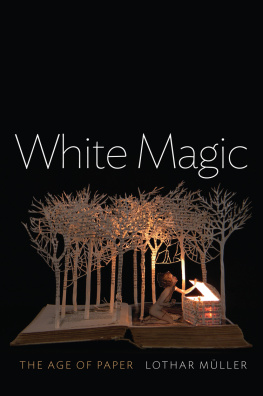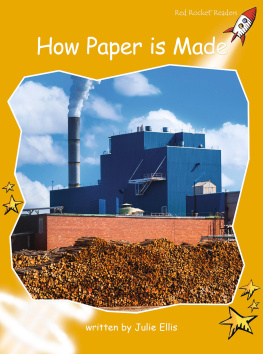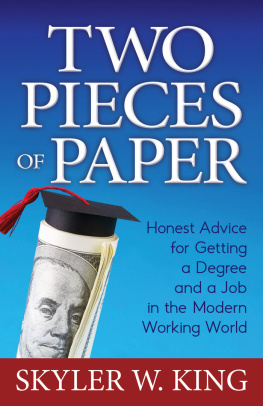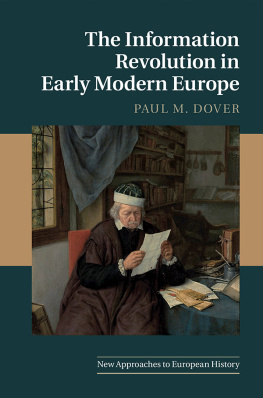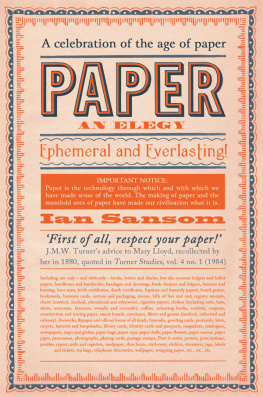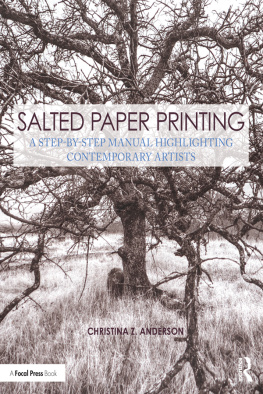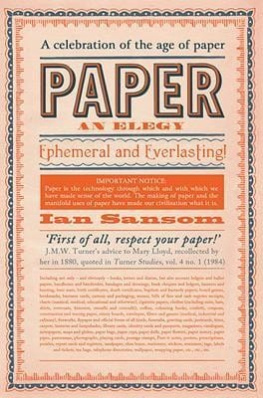
For E, C, and J
First published in German as Weie Magie Carl Hanser Verlag Mnchen 2012
This English edition Polity Press, 2014
The translation of this work was funded by Geisteswissenschaften International Translation Funding for Humanities and Social Sciences from Germany, a joint initiative of the Fritz Thyssen Foundation, the German Federal Foreign Office, the collecting society VG WORT and the Brsenverein des Deutschen Buchhandels (German Publishers & Booksellers Association).
Polity Press
65 Bridge Street
Cambridge CB2 1UR, UK
Polity Press
350 Main Street
Malden, MA 02148, USA
All rights reserved. Except for the quotation of short passages for the purpose of criticism and review, no part of this publication may be reproduced, stored in a retrieval system, or transmitted, in any form or by any means, electronic, mechanical, photocopying, recording or otherwise, without the prior permission of the publisher.
ISBN-13: 978-0-7456-7253-3
ISBN-13: 978-0-7456-8185-6 (epub)
ISBN-13: 978-0-7456-8184-9 (mobi)
A catalogue record for this book is available from the British Library.
Library of Congress Cataloging-in-Publication Data
Mller, Lothar, 1954
[Weisse Magie. English]
White magic : the age of paper / Lothar Mller.
pages cm
ISBN 978-0-7456-7253-3 (jacketed hardback : alk. paper) 1. PaperHistory. 2. PapermakingHistory. 3. Paper industryHistory. 4. PrintingHistory. I. Title.
TS1090.M8513 2014
676dc23
2014019958
The publisher has used its best endeavours to ensure that the URLs for external websites referred to in this book are correct and active at the time of going to press. However, the publisher has no responsibility for the websites and can make no guarantee that a site will remain live or that the content is or will remain appropriate.
Every effort has been made to trace all copyright holders, but if any have been inadvertently overlooked the publisher will be pleased to include any necessary credits in any subsequent reprint or edition.
For further information on Polity, visit our website: politybooks.com
Thanks
Paper is accommodating, and that's what makes it such a wide field. It's not a field you can till on your own. I would like to thank Martin Bauer for his continual reading of the text, and his suggestions and objections right from the start; Henning Ritter for discoveries, feedback, and encouragement; Eberhard Sens for extensive supporting work on the basic scaffolding and bibliography; Philippe Despoix for Canadian commentary and the insight into Harold Innis's literary estate; Justus Fetscheras alwaysfor opening up side doors in the universal library; and Dirk Liebenow for papers from collections in Lower Saxony.
Fortunately, print media are not only made of paper; they are also conversational media. Thank you to my Sddeutsche Zeitung colleagues Jens Bisky in Berlin for ideas shared in passing and Thomas Steinfeld in Munich for his parallel commentary and editing.
In every field there are proven experts, and some of them are open to visitors from the neighborhood. I would like to thank Frieder Schmidt, head of the Cultural and Historical Paper Collections in the Museum of Books and Writing of the German National Library in Leipzig, for his enlightening discussions and patient/critical review of the manuscript.
The idea for this book first took shape during a three-month stay at the Institute for Advanced Study in Berlin from October to December 2008. For their suggestions during this hiatus I would like to thank the rector Luca Giuliani, all of the employees, my co-Fellows and, above all, the librarians working for Gesine Bottomley and her successor Sonja Grund.
PROLOGUE
The Microbe Experiment
On November 16, 1932, the French writer Paul Valry gave a lecture at the Universit des Annales in Paris entitled La politique de l'esprit. In this lecture, he described the present day as a state of chaos which made it impossible to foresee the future. We live, he said, in a civilization based on a kind of trusteeship. Just as banks can only survive as long as all of their account holders do not try to withdraw their deposits at once, civilization can only exist as long as the imaginary resources sustaining it are not suddenly revoked. To illustrate civilization's structure fiduciaire, its dependency on the interplay between trust and credit, Valry proposed a thought experiment. It was not his idea, he said, but one borrowed from a review he had read long ago of a book by some English or American author whose name he had forgotten. Imagine, Valry suggested, that a mysterious microbe attacked and swiftly annihilated all of the paper in the world. No defense, no remedy; it is impossible to find any means of exterminating the microbe or of countering the physiochemical phenomenon attacking the cellulose. The unknown destroyer penetrates drawers and chests, reduces to dust the contents of our pocketbooks and our libraries; every written thing vanishes.
At the time, Valry knew nothing of the rapid deterioration of paper made from groundwood pulp. The purpose of his thought experiment was to draw attention not to the actual decay of paper but to the fact that paper is omnipresent and indispensable in modern civilization. He needed an image to illustrate a crisis in the ongoing self-preservation of civilization as a whole, not just of literature or the arts. This is why he referred to pocketbooks and libraries in the same breath. He described the civilization around him as having paper coursing through its veins, with social institutions and routines dependent on paper. Imagine a world with no more paper, he said, with no more banknotes, bonds, files, laws, poems, or newspapers.
When Valry gave his lecture, radio and gramophone technologies were still young and people had just begun to experiment with television. Even cinema, the telegraph, and the telephone had failed to replace paper as the key medium for storing and circulating words, images, and numbers. The tremendous destructive force of Valry's hypothetical microbe highlighted the ubiquity and universality of paper in modern civilization. His thought experiment revealed all of the places that paper could be found.
The philosopher Jacques Derrida may have been familiar with Paul Valry's lecture. In a long and very personal interview with the journal Cahiers de Mdiologie at the end of the last century, in 1997, Derrida stripped the elements of fantasy from Valry's microbe vision of the year 1932 and transformed the notion of paper's swift, sudden disintegration into a prediction that paper would gradually retreat from the universality that Valry had in mind. Derrida said we are currently experiencing the kind of shrinkage that Balzac envisioned in his novel La peau de chagrin: just as the magical parchment inscribed with Arabic letters retracts in the novel, paper is shrinking and contracting in our world.
Derrida was clever. He did not talk about the end, much less the death, of paper. He expected paper to continue to have a massive presence in modern civilization even after the explosion of digital media. He only said that the age of paper's structural hegemony as a medium for images and symbols was drawing to a closeand when he spoke of the retraite or retreat of paper, he did not mean a retreat across the board, but a retreat from key positions.
Derrida had spent his whole life thinking about the written word. In the interview, he described how his writing hand would glide over a sheet of white paper; he talked about writing on a manual typewriter, then on an electric one, and finally on a computer; and he said that the overlapping transitions between these writing routines were a defining experience of his generation. But to both Derrida and Valry, paper was more than just a writing surface. Derrida, too, talked about the merging of paper, money, and bankingabout
Next page
